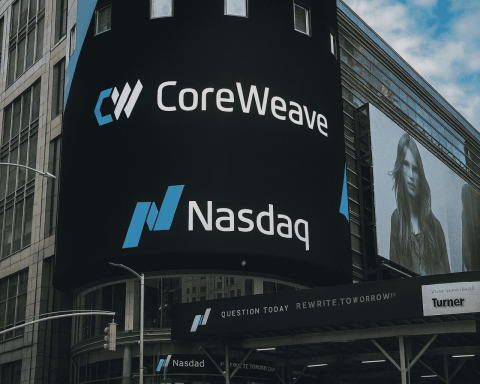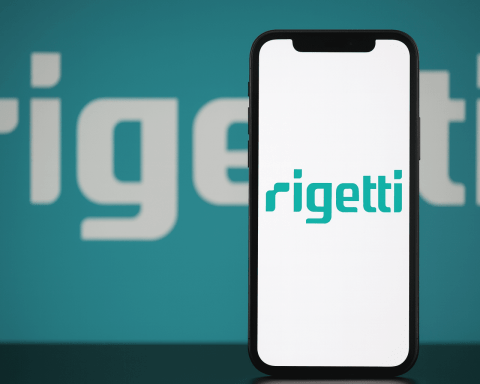Ambev S.A. (NYSE: ABEV), the Latin American brewing giant behind brands like Skol, Brahma, Antarctica, and Stella Artois (via AB InBev), continues to attract attention from value and income investors as 2025 winds down. On November 21, 2025, ABEV was trading around $2.48 per ADR, giving the company an estimated market cap of about $39.2 billion, up roughly 12% over the past year. [1]
Below is a detailed, Google News–friendly breakdown of what’s driving the stock, how its latest earnings are shaping sentiment, and what to watch into 2026.
1. ABEV stock snapshot for November 21, 2025
- Latest price: About $2.48 per share
- Daily move: Modest gain versus the prior close, with intraday trading between roughly $2.43 and $2.50.
- Market capitalization: Around $39.17 billion, placing Ambev firmly in large-cap territory. [2]
- 1-year market cap growth: Approx. +12% year over year, reflecting renewed investor confidence after a challenging period for beverage volumes in Brazil and Canada. [3]
Options data around the November 21, 2025 expiry show active interest in calls at the $2.50 strike, suggesting some traders are positioning for limited upside, but implied volatility remains relatively contained – consistent with Ambev’s profile as a defensive consumer-staples name rather than a high-beta growth story. [4]
2. Q3 2025: Earnings beat, strong profit growth, and a share buyback
The main fundamental catalyst shaping ABEV’s story today is its Q3 2025 earnings, released on October 29–30, 2025.
Key highlights:
- Net revenue: Up around 7% year over year, supported by higher pricing and better revenue per hectoliter across many regions. [5]
- Net profit: Roughly R$4.86 billion, a surge of about 36% versus the prior year, and well above analyst expectations near R$3.2 billion. [6]
- EBITDA: Adjusted/normalized EBITDA dipped slightly to about R$7.06 billion, but still came in ahead of market forecasts (around R$6.65 billion), thanks to disciplined cost control. [7]
- Volumes: Overall volume decline of roughly 5–6%, driven mainly by softness in Brazil and Canada, with Brazil Beer volumes down about 7.7%. [8]
- Pricing and mix: Net revenue per hectoliter (NR/hl) increased about 7–8%, offsetting weaker volumes and supporting margins. [9]
The big headline: A new share buyback program
Alongside Q3 results, Ambev announced a share buyback program of up to 208 million shares, representing roughly 4.9% of its share capital, over the next 18 months. [10]
This is important for today’s ABEV investors because:
- It signals management confidence in the company’s long-term earnings power.
- It can provide downside support for the ADR price if executed aggressively.
- It has the potential to be EPS-accretive, particularly with the ADR trading near the low-single-digit dollar range.
Analysts at major banks, including JPMorgan, have noted that even though demand remains soft, Ambev is showing impressive margin resilience and strong performance in its premium brands, which are less price-sensitive and more profitable. [11]
3. What’s driving Ambev’s fundamentals now?
3.1 Volumes under pressure, but pricing power remains
The main overhang on ABEV today is still weak beer demand in some of its core markets, particularly:
- Brazil Beer: Nearly half of Ambev’s EBITDA, with volumes down in the mid-single to high-single digits in Q3 2025. [12]
- Canada and CAC (Central America & Caribbean): Also seeing softer volumes amid macroeconomic headwinds and unseasonal weather. [13]
However, management has stressed that this is industry-wide softness, not a loss of market share, and that price increases have not significantly hurt demand. Beer price inflation remains broadly aligned with Brazil’s consumer price index, helping Ambev sustain margins without overly pressuring consumers. [14]
3.2 Cost discipline and margin defense
A key reason ABEV stock has held up relatively well is the company’s tight control over costs:
- Cash COGS (cost of goods sold) per hectoliter in Brazil has risen more slowly than net revenue per hectoliter in 2025 year-to-date, boosting profitability per unit sold. [15]
- Commodity cost pressures (like aluminum and grains) have eased compared with 2022–2023 levels, reducing margin volatility. (Inference from commodity trend context, with Q3 commentary emphasizing cost discipline.) [16]
When you combine this with stable to improving pricing, the result is robust profit growth, even on flat or declining volumes – exactly what Q3 2025 showed.
3.3 Dividends and income appeal
Ambev has long been popular with income investors for its regular distributions. Recent dividend data indicate a payout in the range of up to about $0.0788 per ADR in the November 19–21 window, though exact amounts vary by event and currency conversion. [17]
While Ambev’s dividend can be somewhat lumpy and dependent on local approvals, its overall profile is that of a steady payer, supported by strong cash generation and limited capital-intensive expansion needs versus heavy industry.
4. How the market is viewing ABEV right now
Several recent analyses frame ABEV as:
- A value-tilted consumer-staples stock with solid fundamentals.
- A potential total-return story thanks to dividends plus moderate capital appreciation.
For example:
- One quantitative screen based on Peter Lynch’s methodology gives Ambev a high score (around 90%+), suggesting the stock is attractive on traditional valuation and growth metrics within the consumer-staples universe. [18]
- Independent equity research has highlighted Ambev’s “stable performance and great potential for 2026”, citing its strong balance sheet, defensive positioning in beverages, and meaningful upside from current price levels if volumes recover and Brazil’s macro backdrop stabilizes. [19]
On the flip side, bears point to:
- Persistent volume weakness in Brazil Beer and Canada. [20]
- Macroeconomic uncertainty and potential tax increases on alcoholic beverages in Brazil and other Latin American markets. [21]
Overall, sentiment today leans cautiously constructive: the stock is not priced like a high-growth name, but its earnings beat, buyback plan, and defensive characteristics have drawn interest from investors looking beyond high-flying tech.
5. Key risks ABEV investors should watch
Even as ABEV trades relatively calmly around the mid-$2 range, there are several risks that could move the stock in the months ahead:
5.1 Macro and consumer-spending risk in Brazil and Latin America
- Brazil’s economy has shown moderate growth and mid-single-digit inflation, but any renewed slowdown or real-income pressure could hit beer consumption, especially among lower-income consumers who make up a large share of Ambev’s base. [22]
5.2 Volume recovery timing
- The investment case increasingly rests on whether volumes stabilize and eventually recover. If industry softness persists into 2026, Ambev may need to rely more heavily on pricing and cost cuts – levers that have natural limits. [23]
5.3 Regulatory and tax pressure
- Discussions in Brazil and other Latin American markets around higher taxes on alcohol could compress margins or force price increases that risk further volume declines. [24]
5.4 Currency exposure
- ABEV ADR investors are exposed to swings in the Brazilian real and other regional currencies versus the U.S. dollar. Even if local results are strong, FX headwinds can mute ADR performance.
6. Investment outlook: Is ABEV a buy at around $2.48?
Whether ABEV is attractive at today’s price depends on your time horizon and risk tolerance, but several bullish factors stand out:
- Profits are growing faster than revenue
- Q3 2025 showed +36% net profit growth on mid-single-digit revenue gains, underscoring management’s cost discipline. [25]
- Shareholder-friendly capital allocation
- A 208 million-share buyback and a history of regular dividends support the total-return case, particularly for income-oriented investors. [26]
- Defensive category with brand strength
- Beer and non-alcoholic beverages are classic defensive sectors, and Ambev’s brand portfolio remains dominant across Brazil and Latin America, with premium brands gaining share. [27]
- Valuation and upside potential
- With the ADR trading in the low single digits, some analysts see meaningful upside into 2026, particularly if volumes recover and macro conditions in Brazil improve. [28]
Balanced against these are key uncertainties: sustained volume challenges, FX risk, and regulatory changes. For that reason, ABEV may be more appropriate as:
- A core holding in an emerging-markets or global consumer-staples allocation.
- A dividend and value play for investors comfortable with Brazilian macro risk.
- A tactical position for those expecting a cyclical recovery in beer consumption and Latin American growth.
7. What to watch next for ABEV holders
If you own or are considering ABEV around November 21, 2025, here are the main catalysts to monitor:
- Q4 2025 and full-year 2025 guidance
- Any commentary on volume stabilization in Brazil Beer and Canada will be crucial.
- Execution of the buyback
- The pace and size of repurchases versus the 208 million-share authorization. [29]
- Dividend announcements and payout policy
- Updates on ex-dividend dates, payout ratios, and any potential special dividends. [30]
- Macro data in Brazil and key markets
- Trends in inflation, real wages, and consumer confidence, which directly affect beer volumes. [31]
Bottom line
As of November 21, 2025, Ambev’s ABEV stock combines:
- Solid profitability and improving margins,
- A meaningful buyback and ongoing dividends, and
- Exposure to Latin America’s long-term consumption growth,
with the offsetting risks of near-term volume weakness, macro volatility, and regulatory uncertainty.
For long-term, dividend-focused and value-oriented investors willing to accept emerging-markets risk, ABEV around $2.48 looks like a steady, defensive name with room to run if 2026 brings even a modest recovery in beer demand.
References
1. stockanalysis.com, 2. stockanalysis.com, 3. stockanalysis.com, 4. www.investing.com, 5. finance.yahoo.com, 6. www.reuters.com, 7. www.reuters.com, 8. www.reuters.com, 9. www.investing.com, 10. www.reuters.com, 11. www.reuters.com, 12. www.investing.com, 13. www.reuters.com, 14. brazilstockguide.com, 15. www.fool.com, 16. www.reuters.com, 17. marketchameleon.com, 18. www.nasdaq.com, 19. seekingalpha.com, 20. www.reuters.com, 21. dcfmodeling.com, 22. dcfmodeling.com, 23. www.investing.com, 24. dcfmodeling.com, 25. www.reuters.com, 26. www.marketscreener.com, 27. www.reuters.com, 28. seekingalpha.com, 29. www.marketscreener.com, 30. marketchameleon.com, 31. dcfmodeling.com






